Comic book superhero stories are rooted in impossible things. Science experiments gone horribly wrong, humanoid creatures with remarkable abilities, and alien invaders are all par for the course when it comes to following the adventures of costumed vigilantes. But in a medium woven of high-tech dangers and inter-dimensional threats, witchcraft, folklore, and the supernatural are complex elements in DC comics. The origins are unique, borrowing from ancient folklore and common fairy tales to create terrifying hybrids of the super and the strange. In honor of one of the oldest, and spookiest, holidays of the year, we’re going to take a closer look at some of DC’s supernatural characters to discover the deep roots of folklore and horror that have helped to make them memorable.
Raven – A good old devil child
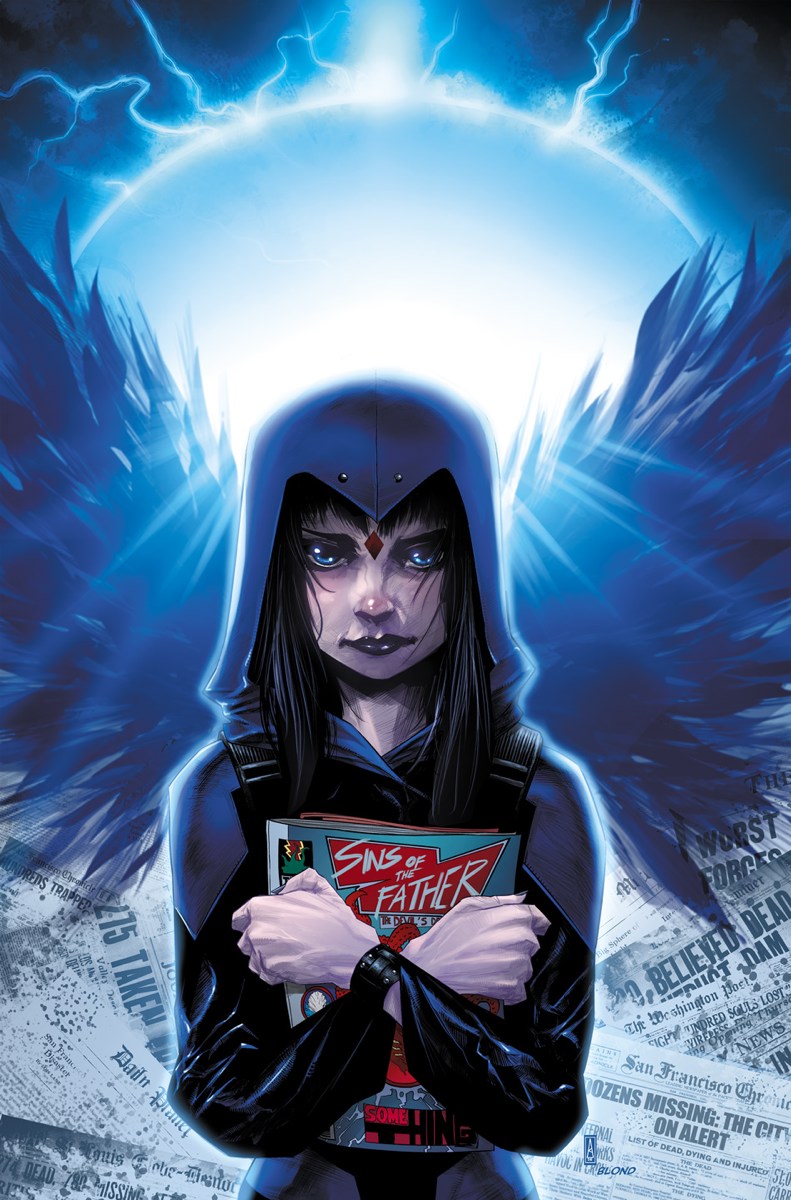
Teen Titans powerhouse, Raven, is one of the most recognizable characters in DC comics. While she may have gotten her fame from appearing in children’s TV shows, Raven’s backstory is a tragedy of demonic evil and devastating sacrifice. Raven is the half-human, half-demon daughter of Trigon, an inter-dimensional demon with a legendary blood lust. If you’ve seen the animated Teen Titans from the early 2000’s, you’re already familiar with the duality of Raven’s character. She struggles constantly to stay in the light despite an intense inner desire to follow her nature and become the demon she was born to be. Both in television and comics- sometimes good Raven wins, and sometimes she loses.
Stories of demons procreating with human beings can be traced back centuries and appear in nearly every culture. The Cambion of European folklore was said to be the product of a tryst between an incubus or succubus and a human. The demon parents of these creatures were said to prey on sleeping men and women for the sole purpose of creating unclean offspring- offspring that could be used to torment and trick other human beings into committing sinful deeds. The stories of demonic attacks on sleeping victims are thought to have found their roots in the phenomenon of sleep paralysis- an affliction that causes the sufferer to hallucinate between dreaming and sleeping, interrupting REM sleep cycles. Often, sleep paralysis will cause difficulty breathing, the sensation of being unable to move, and terrifying visions of dark shadows and creatures tormenting the sleeping person. Sleep paralysis is easier to study in modern science, but for centuries those who found themselves in the traumatizing state could only assume that the cause was a supernatural one- supernatural and evil. Remnants of this belief can be seen in Raven’s set of powers. She has the ability to cover enemies in a dark cloud leaving them essentially paralyzed and unable to control their own bodies. Similarly, she can pass through the minds and dreams of others appearing as a dark specter. Though she often uses her abilities to help the Justice League, her skill set is made of literal nightmares.
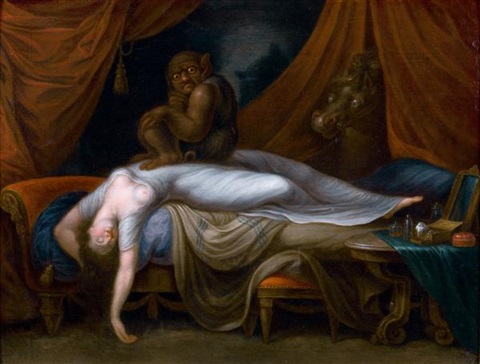
Baobhan Sith in Scotland, Huldra in Scandinavia, and La Sayona in Venezuela are all common names for the supernatural creatures who use seduction to lure ordinary men and women onto a path of darkness. Even more terrifying are the stories insisting that demonic presences only needed to be called at the time of birth in order for a child to become irreversibly altered into a creature of the dark.
On of the best known American fairy tales depicting demonic parentage can be found in the Pine Barrens of New Jersey. The colonial era folktale has many versions, but the most popular tells of a woman named Mother Leeds who was distraught at becoming pregnant with a 13th child. As the story goes, on a dark and stormy night in 1735, Mother Leeds went into labor. Exhausted and frustrated with the prospect of yet another child to feed and clothe, as she gave birth Mother Leeds shouted that if this child were to live, it would be a devil child. For a brief moment, the new born looked like any other infant, but before the eyes of Mother Leeds and her midwife, the child sprouted bat-like wings, a goat’s head, a forked tail, and hooved feet before flying up the chimney and disappearing into the forest. The Legend of The Jersey Devil is a staple in northeastern American folklore, and whether you believe the sightings claimed over the past 300 years or not, the warning of the story is clear. Demonic forces, in any capacity, have the ability to create uncontrollable offspring with dangerous tendencies. Somehow, the lore of demon children makes Raven’s fight more admirable. It takes a special kind of hero to combat the internal equivalent of gravity. Honorable as it may be, it does raise a question of how futile Raven’s efforts are – and whether or not it’s ever been a good idea for the heroes of DC to trust in her.
Deadman – A vengeful ghost
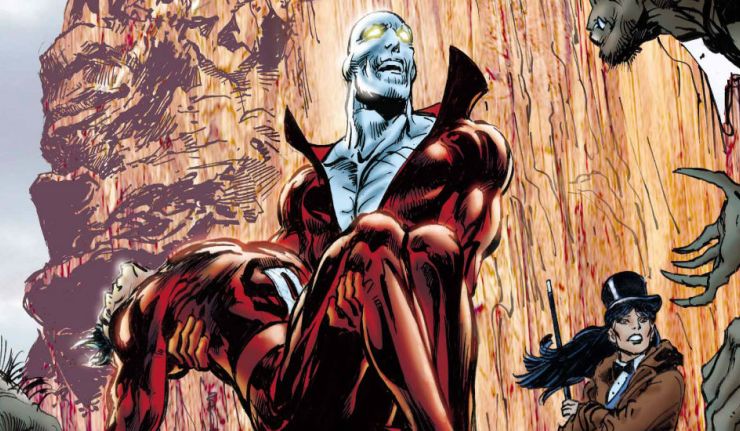
Batman becomes a vigilante to avenge the murder of his beloved parents, Martha and Thomas Wayne. Deadman is out to avenge a murder too, but not the murder of a loved one- he’s looking for his own killer. Boston Brand, also known as Deadman, is a somewhat lesser-known DC hero. He appears as a member of Justice League Dark, as well as and occasional character on the animated Justice League Unlimited series. Similar to the death of Dick Grayson’s parents, Brand is murdered during a trapeze performance. Furious to realize he is no longer alive, Brand becomes a vigilante ghost bent on figuring out who is responsible for his untimely death.
As a Justice League member, Deadman offers an arsenal of impressive powers from passing through solid surfaces to being able to possess beings as powerful as Superman. Though death may have been his downfall, Deadman is able to use his Olympic level acrobatic skills with the added bonus of being able to fly.
The tragedy of Boston Brand utilizes a common ghost story- the spirit unable to rest while their killer is still at large. Ghosts are no small antagonist. From poltergeists to Women in White, ghosts with unresolved trauma dominate urban legends and cause real problems for the ordinary folk who cross their paths.
The story of Elva Zona Heaster Shue is a prime example of murder victims finding justice from beyond the grave. In 1897, Elva was found dead in her home by a local messenger boy who had been sent by her husband, Edward. The boy found Elva at the bottom of the stairs, her neck twisted into an unnatural position. The child ran for help, arriving a short while later with his mother and the town physician. When help arrived, Elva’s body was not where the boy had found it. Sometime before, Edward had arrived home, taken the body upstairs, dressed her in a high-collared mourning gown, and was weeping uncontrollably with Elva’s corpse in his arms. Elva had been several months pregnant, and she and Edward had only been married six months. The doctor was moved by the display of grief, and declared Elva’s death a product of pregnancy complications. He failed to conduct a full examination of her body for fear of further upsetting the distraught widower. Elva was mourned and buried and her community moved on, except for one person- Elva’s mother.
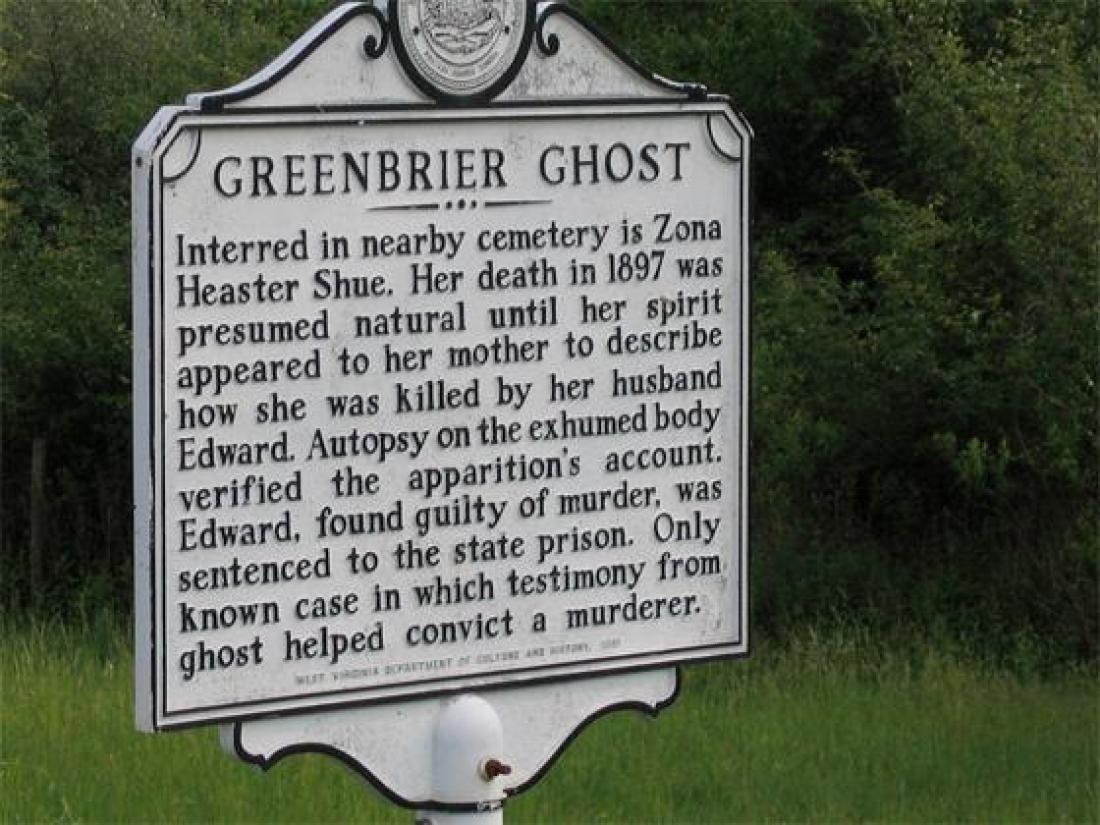
Mary Jane Heaster had hated Edward Shue from the moment he rode into town. She had a bad feeling about the charming blacksmith, and a mother’s intuition is rarely wrong. Not long after the burial, Mrs. Heaster approached town officials claiming a ridiculous story. She insisted that her daughter’s spirit had appeared to her four nights in a row and told her that Edward was a cruel, abusive husband who had strangled her to death in a fit of rage. Mrs. Heaster was so persistent that eventually the city prosecutor questioned the Doctor that had written Elva’s death certificate. The man admitted that he had not properly examined the body upon its discovery, leading to an exhumation of Elva’s grave. After removing her high-collared gown, the evidence of murder was plain to see. Elva’s neck showed tell-tale signs of strangulation. Furthermore, an investigation into Edward Shue proved that the supposedly lovesick widower was far from what he appeared to be- his name wasn’t even Edward Shue. The man claiming to be Edward Shue was a serial abuser with several mysteriously missing or dead wives.
Elva’s story is far from unique, but represents a real fear for those who think it possible to escape the reach of justice. If the dead can talk, there is little hope for keeping secrets of the past hidden and buried. Deadman is the full embodiment of of justice from beyond the grave, personifying both hope and terror while fighting alongside the Justice League. Talking dead can be trouble, but flying and fighting dead are a super-villain’s worst nightmare.
Madame Xanadu – The dangerous female mystic
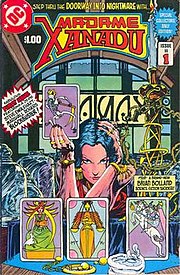
When Macbeth became a one man wrecking crew to his entire legacy and social standing, who would you say is most to blame? His demanding wife? His own blind ambition? Or perhaps it’s the witches who offered him a glimpse into his future. If Macbeth had never met the three witches, would he have found himself on the path a self-fulfilling prophecy of destruction? That question cuts to the heart of what has made mystics and fortune tellers among the most feared a respected beings in both fiction and reality. By whatever name- oracles, witches, prophets, and psychics- have been praised like gods and hunted like animals throughout the course of human history.
Madame Xanadu is among the oldest of DC’s characters- not in her literal publication, but in her fictional history. Her story begins in the time of King Arthur, where she is presented as the sister of one of Arthur’s most devious enemies, Morgan Le Fay. Le Fay is another powerful sorceress, often credited with putting the wheels of Arthur’s demise into motion. The legends of King Arthur are riddled with individuals possessing powerful magic that tampers with the prophesied fates of the stories’ heroes. Xanadu, known in Arthur’s court as Nimue, is a former flame of Merlin. In her DC title, she performs as an undercurrent in the popular legend, pushing and pulling events toward their inevitable conclusions.

Initially, Madame Xanadu is not a particularly moral character. She uses her abilities to alter people’s futures at will, often serving her own desires. The truths she chooses to reveal or omit have dire consequences for those around her, and Xanadu shows little regret for her influence. Eventually, she looks to atone for her past by becoming a tarot reader and psychic advisor to many of DC’s most notable characters. The Suicide Squad seeks her guidance when threatened by Enchantress, and her frequent interactions with John Constantine (perhaps reluctantly) have provided him with needed magical items in important fights.
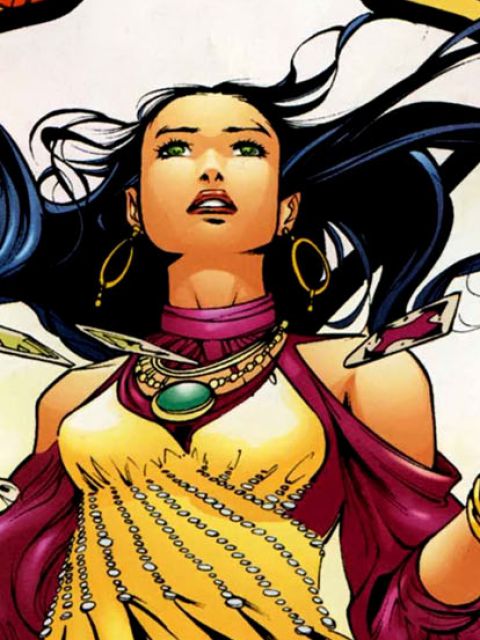
Some stories imply that when the Salem Witch Trials ripped apart Massachusetts in 1692, one of the earliest transgressions mentioned was the young women of Salem performing folk magic in the woods in hopes of revealing the identities of their future husbands. Teenage girls participating in nonsense rituals to get a glimpse into their romantic future is not uncommon- anyone who has ever played a game of MASH can attest to that, but in Puritan New England, there was no tolerance for those who would seek the future- even for fun. Salem made a self-fulfilling prophecy of their own. By assuming something evil was stalking Salem, the citizens of Salem created a very real, predatory evil.
Typically pictured with her tarot cards, Madame Xanadu seems to justify our culture’s deeply ingrained fear and fascination with witches. Supernatural knowledge of the future represents a horrifyingly unfair advantage. If we believe that someone has the power to circumvent our actions, distort our views, and lead us off the right path, they become a beacon of limitless possibility and a dangerous threat. If your cringed when you read Oedipus in high school, you’ve seen just what’s at stake when someone believes they know the future. Oedipus is one disturbing example of the paradox, but this fear has lead to thousands of very real trials, exiles, and executions throughout history posing a very important question: is it the fear of evil influence that breeds evil influence? In any case, as long as Madame Xanadu remains on the good side, DC’s heroes have a strong ally in the fight against the unknown.
Swamp Thing – Deities of nature

Swamp Thing is arguably one of the most powerful beings in DC comics. Once an ambitious young scientist, most versions of his story include an accidental transformation brought about by sabotage to his lab or an unforeseen explosion. The result is always the same- Swamp Thing’s humanity becomes a distant memory as he dissolves into the natural energy of the Swamp. The gifted scientist becomes a supernatural epicenter, able to control the plant-life from anywhere in the world and drift limitlessness through earth and time. Despite his striking new powers, moments of human grief and loneliness occasionally break through. A ‘thing’ is not a man, and even as Swamp Thing forgets the person he once was, the loss remains at the core of his consciousness.
Stories of humans born from or becoming part of a physical landscape go back to ancient cultures. The Christian and Hebrew Bibles tell of the first human being formed from clay and dust of the earth. In the book of Genesis, Lot’s wife is transformed into a pillar of salt when she fails to follow god’s instructions. The wood nymphs of Greek mythology were said to be gifted with the ability to transform from humanoid forms to that of trees and flowers at will. It seems that for as long as humans have been telling stories, the power and magic of nature has served as a transformative catalyst and devastating punishment in the presence of deities.
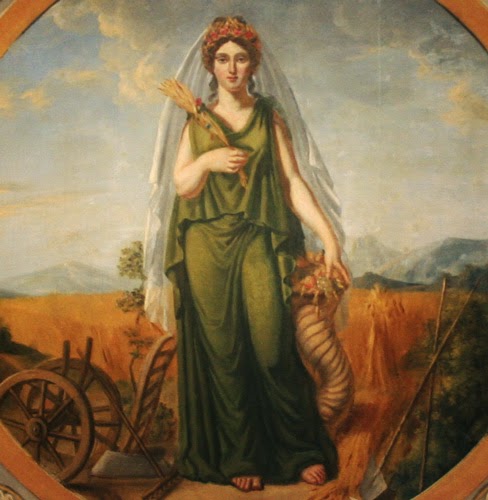
Swamp Thing often behaves as a caretaker and guardian of the natural world. This is another role taken straight from the traditions of ancient mythology. When threatened or upset, Swamp Thing uses nature as a weapon- his ability to give and take becoming effective scales of justice for his enemies. In the well known myth of Persephone, her mother- Demeter- is so heartbroken by the kidnapping of her daughter that she takes the beauty, fertility, and warmth of nature from all of humanity. For the six months Persephone resides in the Underworld, winter takes hold of the world of men. Crops die, trees lose their leaves, and the sun refuses to warm the ground as it usually does. Only upon Persephone’s yearly return does Demeter relent and allow spring to give life to the world again.
Control over the natural world is a power with endless capability for both creation and destruction. It’s godlike in spirit, putting the very balance of life and death in the hands of distant entities. Perhaps that is what makes supernatural beings with such control feel so inhuman. The responsibility of regulating the flow of creation and decimation is not for the faint of heart- nor is it a challenge most ordinary people could handle. Though Swamp Thing may have lost his humanity in his transformation, the process has granted him abilities that has long been reserved for the most respected and feared deities.
In the complicated world of comic book characters and the powers they possess, striking a balance between fantastic and believable can be a difficult line to walk. For writers, weaving familiar narratives into new stories grants them the freedom to explore impossibilities while utilizing emotions a superstitions natural to the human experience. DC’s iconic heroes are no different and have taken their place among humanity’s more terrifying and inspiring myths. Mythology evolves, inseparably mixing the distant past with the changing landscape of modern science. The connecting emotion, more often than not, is fear. How we react to the unknown fuels the kind of stories we tell. The similar images appearing in characters from ancient to modern times is no mistake- they personify the things we admire and fear, offering a glimpse behind the veil each time something goes bump in the night.